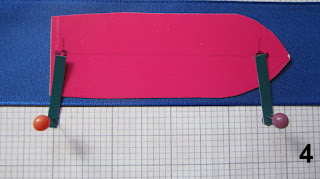I had a long and interesting phone call recently with
Anthony Lane, who wrote that excellent book on Lightships ‘Guiding
Lights’. Tony visited Simon’s ship back
in 2000 at Hoo. She was then called ‘Lady December’; still had her mizzen; and
was still partially painted red. He says it was difficult to see much as the
ship was very cluttered, but he did send me one photo of the starboard stern
lead (Photo 1071).
This relates to
Steve’s question about stern hawes pipes, so it set me thinking. Although these vessels were not anchored by the
stern whilst on station, they did need some form of mooring when in harbour,
whether they were tied up alongside, or stern first. The ropes, which I assume were fed through leads,
had to be secured to something substantial on the ship. The stern leads on
Cormorant have long since disappeared, but there are twin bollards on either
side (as shown in my last post). Her bow leads (Photo 1072) are still in use.
However I cannot
find much evidence of bollards on similar vessels, mainly because the photos I
do have were mostly taken from other craft and any bollards are hidden by the
gunwales. That is not to say there were no bollards there, but nor can I find
any evidence of stern leads or gaps in the gunwales where the bollards would
be.
There are two exceptions – Gull and the ill-fated Puffin
(Photo 1073) – the bollards are visible,
but both vessels were in a very poor state when the photos were taken and the
gunwales have disintegrated in more than one spot.
How did the ropes
leave these vessels? Not over the top of the rail surely! Tony Lane pointed out
a likely candidate in the photo of Guillemot I sent him, but a better
resolution picture (Photo 1074) showed that it was more of a projection than a
hole and Tony correctly deduced that it was the signalling cannon.
The model of the Seagull in the Dublin Maritime Museum (Photo
1075) has the canon in just the right place and also has bollards. But where are the leads or gaps in the
gunwales? Of course a model is just an artist’s impression of what he sees – or
to which photographs and documents he has access.
This is more fun
than a Telegraph crossword !
David
PS: Is ‘gunwale’ the
correct term for the ‘fence’ that goes round the ship between the deck and the
rail? Nobody has answered this question which I also put in my last post.





















